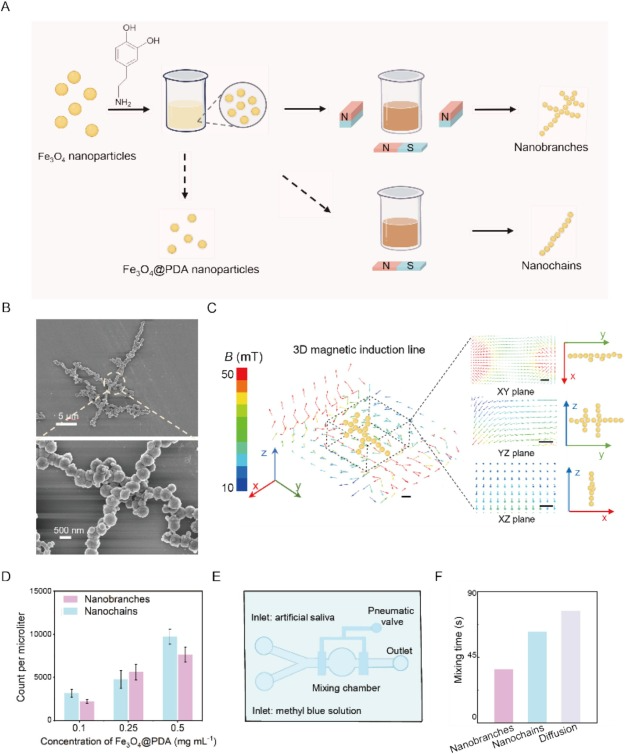Multifunctional and structural magnetic nanobranches for high-efficiency biological detection
Multifunctional and structural magnetic nanobranches for high-efficiency biological detection
Hu, W.; Dong, Y.; Ge, T.; Liu, S.-Y.; Guo, J.; Wang, L.; Yi, C. Q.; Han, X.; Dai, Z.
Chemical Engineering Journal, 2025
https://doi.org/10.1016/j.cej.2025.163297

Abstract. Microfluidics is a powerful tool to integrate biological detection/chemical synthesis processes into a centimeter-size chip with microscale channels for fast and sample-saving detections and reactions. While offering advantages, the microscale channels make it difficult to mix high-viscosity liquid samples and reagents, hindering the further improvement of the rapidity, reliability, sensitivity, and accuracy of biological detections based on microfluidics. The nanorotors can be vital for mixing enhancement in microfluidic chips and specific binding as biomacromolecule carriers. However, the development of low-cost, mass-producible, and particular-shaped nanorotor fabrication methods has been desired but difficult. Here, we introduce low-cost multifunctional and structural magnetic nanobranches to improve mixing efficiency inside microfluidic chips and serve as biomolecular carriers. The nanobranches were fabricated by associating magnetic-field-induced Fe3O4 nanoparticle alignment with self-polymerized dopamine. The nanobranches combine the functionalities of mixers and antibody carriers, being mass-producible, biocompatible, and recyclable. The required mixing time by nanobranches can be as half as that by nanochains, and the reaction for Enzyme-Linked Immunosorbent Assay (ELISA) can be enhanced, promoting sensitivity improvement (∼1.8 times higher than that of nanochains), the limit of detection reduction (6.20, 13.7, 203, and 61.2 pg mL−1 for nanobranches, nanochains, nanospheres, and commercial ELISA kit, respectively), and linear range expansion. It is promising that the fabricated magnetic nanobranches would be a multifunctional tool for high-sensitivity biosensing.

